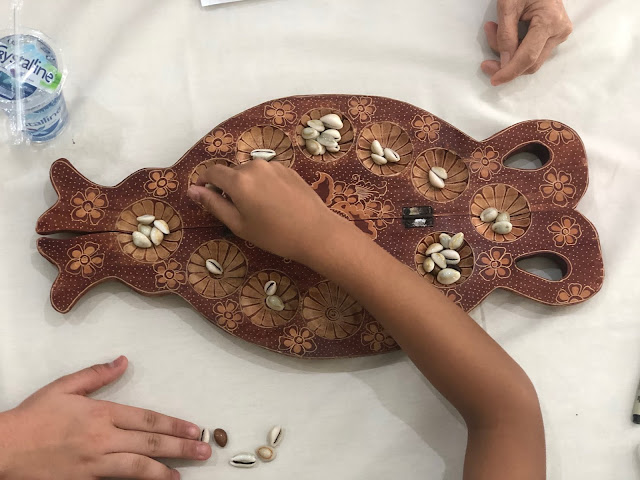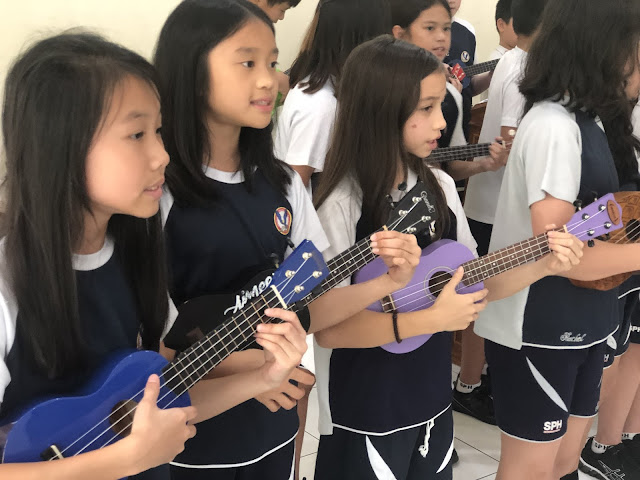Student teaching is a lot like preparing for takeoff. Taking off into the real world, with a real job, and real students. It's real now.
This process of preparation has been going on for the past 4 years in my education at Trinity, but it feels especially real now that I have a job after college. All of these lessons learned in student teaching are no longer things that I am going to use someday, but very soon. The lessons learned about classroom management, assessing, pacing, planning, and so much more, have all been ways in which I've been prepared to takeoff.
As I reflect back on this placement, there are so many ways in which I've been continually been preparing myself to be a real teacher. This week, my CT was absent from school and I had the chance to teach with no sub for the first time at this placement. Despite having a difficult class, I loved getting to run the class completely on my own, and it gave me a taste of having my own classroom, and a taste of what I will be taking off into next year.
This week, I also got to be part of the Easter Chapel that my school puts on. Not many teachers got to play a role in the Chapel, so it was quite exciting for me to play a part in it. Mr. Benjie was actually the one who asked me if I wanted to participate, so it was an honor to be able to follow through with that request. The title of my role was "Villager from Bethany." I had about a one page long script to memorize and then act out in front of the entire school, and on top of that, I was the first one up! I am used to speaking in front of a lot of people, but I was still a little bit nervous. Overall, the whole program went well and it was a lot of fun (definitely reliving my high school theater days!). It was fun to see my 5th graders getting excited about seeing their teacher on stage. Having the opportunity to participate in this out-of-the classroom gets me excited about getting to do fun things like this next year, whether it is programs in school or getting involved with programs at my school like theater or music or sports. Again, it's a little taste of what's to come, and I am continually being prepared by these experiences.
Another fun activity I got to see in my classroom was our class MSL trip. MSL stands for Mission of Service Learning. Basically, each class in the school goes on a few of these trips each year, and serve in some capacity within the community around them. My class went to a Christian Indonesian nursing home. Here, they got to play their ukeleles for the Omas, do origami and color with them, and play games with them. For as misbehaved (and disrespectful) as my students are in the classroom, I got to see a softer side of them as they interacted with the Omas. As many Asian cultures treat their elders with high respect, my students did this as well. As a 5th grader, I think I would have been hesitant to interact with elderly people, but my 5th graders just sat in the midst of all of them like it was completely normal, which was so special to watch! My student also played their ukuleles and sang, and boy, did they sing their hearts out, harmony and all. Being a music lover myself, I thoroughly enjoyed their performance, and I know the Omas did too, especially when they started to sing along! Another part of this that I enjoyed was getting to teach a bunch of elderly Indonesian women how to make an origami swan (I knew that hidden talent would come in handy eventually!). This service trip not only showed me more about Indonesian/Asian culture, but also about my students and what it means to them to serve others. These are all lessons that will prepare me to teach students next year and the years to come, especially as I will be in a similar environment.

On my last day, I showed my students a going away video that I had created for them, which includes pictures and videos of my time at SPH. (Click here to watch it: https://youtu.be/CvCFboI8unQ) They really enjoyed watching it. They smiled, they laughed, and they even said “noooo!” at the end when Selamat Jalan (Bahasa for “Goodbye”) appeared on the screen. Man, was this class a tough one, but oh how it has been preparing me for what is to come.
Whenever it's your first time on a plane-- your first time preparing for takeoff-- there are many mixed emotions: excitement, nerves, anticipation, fear, wonder, the list could go on. These are all feelings I have as I enter into this next chapter of my life as a real teacher. What lies ahead is unknown, but exciting, and I trust that God will continue to lead, guide, and direct even though the path is not always clear, and even though it seems as if I'm taking a giant leap of faith into the unknown. Yet I feel prepared, and I feel at peace. Trinity has prepared me for takeoff, my overseas experiences have prepared me for takeoff, and God has continually been at work in my life preparing me for takeoff.
Indonesia, it's been real, but I have to board my plane now, and prepare to takeoff into my teaching career.
Classroom Confidential: Chapter 7
Community in the classroom is important for students to feel safe, encouraged, and comfortable in the classroom environment around them, and will allow the greatest potential for learning. Although this type of community within the classroom is extremely important, teachers must also strive for ways to connect students with the community outside and around them, bringing students to gain a greater perspective of the world around them. In chapter 7, Schmidt outlines eight reasons for why community-based learning is highly effective for student learning. One strategy that stood out to me was that "community-based learning requires different ways of knowing." Each student learns best in a different way, and community-based learning involves many ways of thinking through incorporating thinking, talking, writing, and so much more. Another strategy that Schmidt wrote about in which I would love to see in my own classroom is that in community-based learning, "teaching and learning are shared." I love watching my students being able to learn from each other, and I especially love when my students teach me new things. Community-based learning allows and fosters all of these shared learning experiences.
In my classroom, I have seen how community-based learning through something that SPH does called Service and Mission Learning (SML). These learning experiences allow classes to go on a trip somewhere in their community in which they can learn and serve. One of the classes at the school is collecting school items for a school by the dump in Jakarta for the kids there, who basically live in the place where everyone's garbage goes. That class will then get to take those school items and deliver it to this part of the community. Through this their perspectives expand of their own community in ways that they may have never realized existed.











